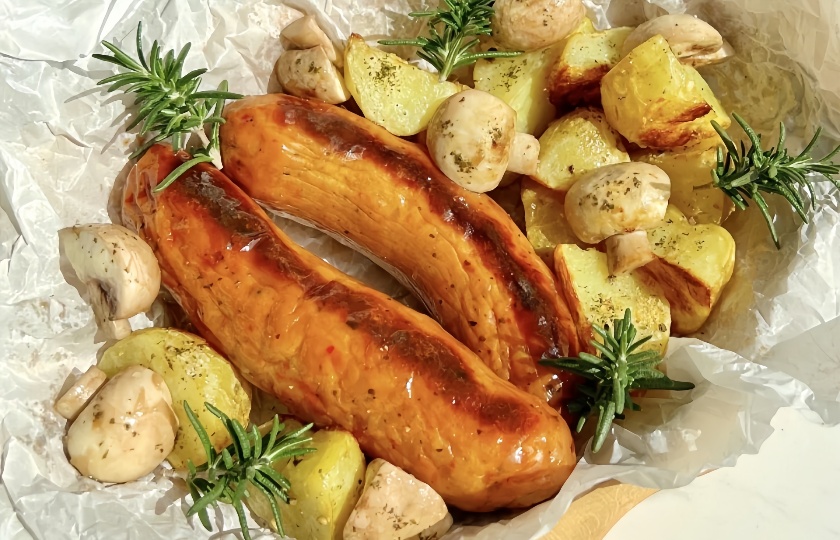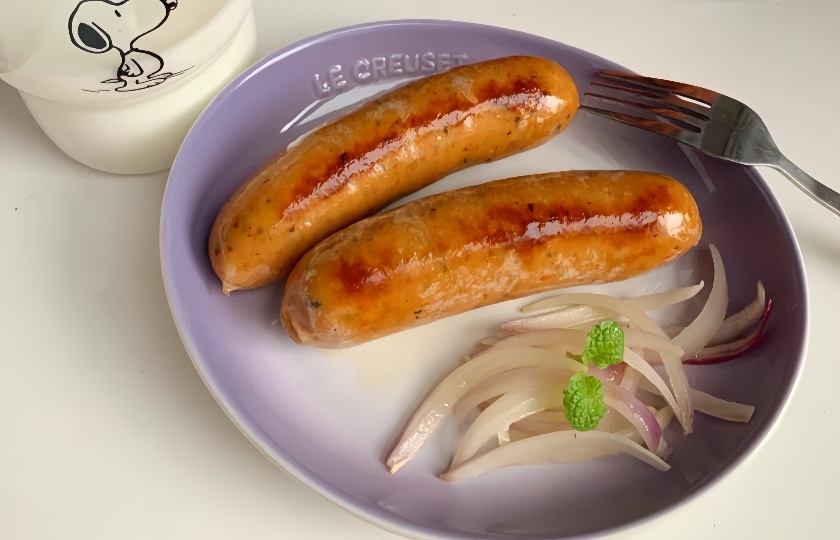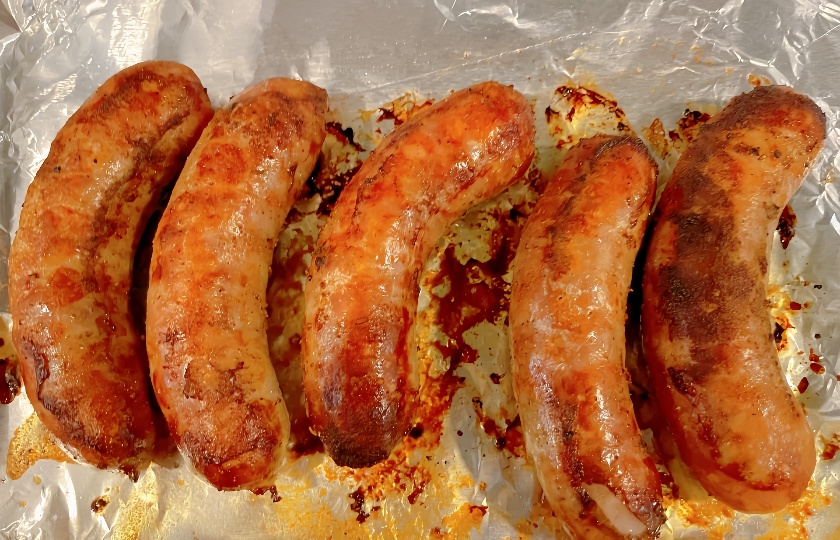Cooking Hacks Unveiled: How Long to Cook Italian Sausage in Oven?
 The rich flavor of Italian sausage is like a little explosion on your taste buds, instantly igniting your palate. But figuring out the right cooking time in the oven can be a real challenge. If you cook it too long, the sausage can turn dry and lose that juicy, tender texture; cook it too briefly, and you risk an upset stomach. Don’t worry—I’m here to share a detailed guide on cooking times to help you nail the perfect doneness for your Italian sausage.
The rich flavor of Italian sausage is like a little explosion on your taste buds, instantly igniting your palate. But figuring out the right cooking time in the oven can be a real challenge. If you cook it too long, the sausage can turn dry and lose that juicy, tender texture; cook it too briefly, and you risk an upset stomach. Don’t worry—I’m here to share a detailed guide on cooking times to help you nail the perfect doneness for your Italian sausage.
How long should you cook Italian sausage in the oven?
The cooking time for Italian sausage in the oven mainly depends on the cooking method and personal taste preferences. Here are some common cooking times and methods:
For Sliced Sausage: If the sausage is cut into thin slices, preheat your oven to 350°F (about 175°C). Lay the sausage slices in a single layer on a baking sheet and bake until crispy, which usually takes about 10 to 15 minutes. Once done, transfer them to a paper towel to absorb any excess fat and let them cool to room temperature.
For Whole Sausage Links: If you're cooking whole Italian sausages, the cooking time will be longer. Preheat your oven to an appropriate temperature (like 400°F or 185°C; you can adjust this based on the size of the sausages and your taste preference). Place the sausages in the preheated oven and cook for about 25 minutes to 1 hour (for example, bake at 400°F for 30 minutes, then flip and bake for another 30 minutes) until they’re crispy and delicious.
What is the Best Temperature for Cooking Italian Sausage?
When it comes to cooking Italian sausage, choosing the right temperature is crucial. Generally, you’ll want to preheat your oven to a suitable range, typically between 175°C and 220°C (which converts to 350°F to 425°F). This temperature range should meet most cooking needs.
However, the specific cooking temperature also depends on the sausage’s “build”—meaning its size and thickness. If the sausage is on the “slimmer” side, you can increase the temperature slightly to cook it quickly. If it’s more “robust,” then lower the temperature to cook it slowly, ensuring it’s cooked through.
Of course, cooking time is also a key factor that must work in harmony with temperature. If you cook it for too long, the sausage may become dry or even burnt; if you cook it for too short a time, it might not be cooked inside. So, during the cooking process, keep an eye on the sausages—flip them when needed, adjust the temperature if necessary, and add time if required.
In summary, the best temperature for cooking Italian sausage should be determined based on the actual situation. Both temperature and time need to be just right to achieve delicious and visually appealing sausages.

Is It Better to Cook Sausages in the Oven or Pan?
This really depends on your personal taste, cooking habits, and the equipment you have at home.
Let’s start with the oven. Cooking sausages in the oven allows for even heat distribution, ensuring the entire sausage cooks consistently. The texture is nicely balanced, and you don’t have to keep flipping them, which makes it a hassle-free option. If you want to cook multiple sausages at once, the oven is definitely up to the task.
Now, let’s talk about the skillet. The advantage here is that you have complete control over the heat—you can crank it up high or lower it down as needed. Watching the sausages closely while they cook makes it easier to achieve your desired texture. Plus, since the skillet is open, you can easily see how they’re cooking and make adjustments as necessary to get them just right. If you want to enhance the flavor, adding a bit of oil or seasoning to the skillet can help the sausages absorb those flavors, making them even more delicious.
Overall, both the oven and skillet have their pros and cons. If you prefer even cooking and a hands-off approach, the oven is your best bet. If you like to have flexible control over the heat and want to keep an eye on things, then the skillet is the way to go. Regardless of your choice, mastering the cooking time and temperature is key to achieving tasty sausages.
How Do You Cut Italian Sausage Before Cooking?
If you’re cooking whole sausages by roasting or frying, there’s actually no need to cut them. Keeping them whole helps retain the juices inside, allowing for even cooking and resulting in a more flavorful and juicy sausage.
However, if you do want to slice them, there are a few methods depending on your intended use:
For Stir-Frying: If you’re using the sausage in a stir-fry with vegetables, you can slice it diagonally into thin pieces. This not only helps the sausage mix better with the vegetables in the pan but also increases the surface area, allowing it to cook through more quickly. Aim for slices about 0.3 to 0.5 cm thick—too thin, and they may dry out; too thick, and they may not cook properly.
For Stewing: If you’re adding the sausage to a soup or stew, cut it into small segments about 2 to 3 cm long. These small pieces will absorb the flavors of the broth during cooking, enhancing the richness of the sausage.
For Pizza or Casseroles: If you’re preparing pizza or baked rice dishes, slicing the sausage into round pieces is a great option. Keep the thickness around 0.2 to 0.3 cm. These thin slices will slightly curl up when heated, providing a layered texture and allowing for even distribution over the pizza or casserole, so every bite is packed with sausage flavor.

Can ltalian sausage be a little pink?
If you notice a pink color in the center of sausage patties, it might be because they are undercooked. This is especially true for thicker patties, where heat may not reach the center, leaving it with a raw appearance. Additionally, if the sausage contains nitrites, they can bind with myoglobin in the meat, causing a pink hue.
However, it’s important to note that from a food safety perspective, if the patties are made from red meat like pork, a pink center could indicate that they haven’t reached a safe internal temperature (pork generally needs to be around 71°C or 160°F). This poses a risk. For poultry like chicken, the safe temperature is about 74°C or 165°F. To ensure safety, it’s best to use a food thermometer to check the internal temperature.
How do l know if ltalian sausage is cooked?
Visual Inspection:
Start by looking at the sausage. If the casing has turned a beautiful golden brown, with some areas slightly charred, that’s a good sign—it’s like the sausage is wearing a “golden coat.” If the sausage appears to have shrunk and become firmer, that might also indicate it’s nearly done. However, this is just a preliminary assessment.
Temperature Check:
The most reliable method is to use a food thermometer to measure the internal temperature of the sausage. For Italian pork sausage, it should reach 160°F (about 71°C) to be fully cooked. If it’s Italian chicken sausage, it needs to reach 165°F (about 74°C) for it to be safe to eat. This is like giving the sausage a “health check”—only eat it when it meets the temperature standards.
Juice Test:
Another tip is to gently poke the sausage with a toothpick or fork. If the juices that come out are clear and not bloody, that can also indicate that the sausage is cooked. However, this method isn't very precise and should be combined with visual and temperature checks for a more accurate assessment.























